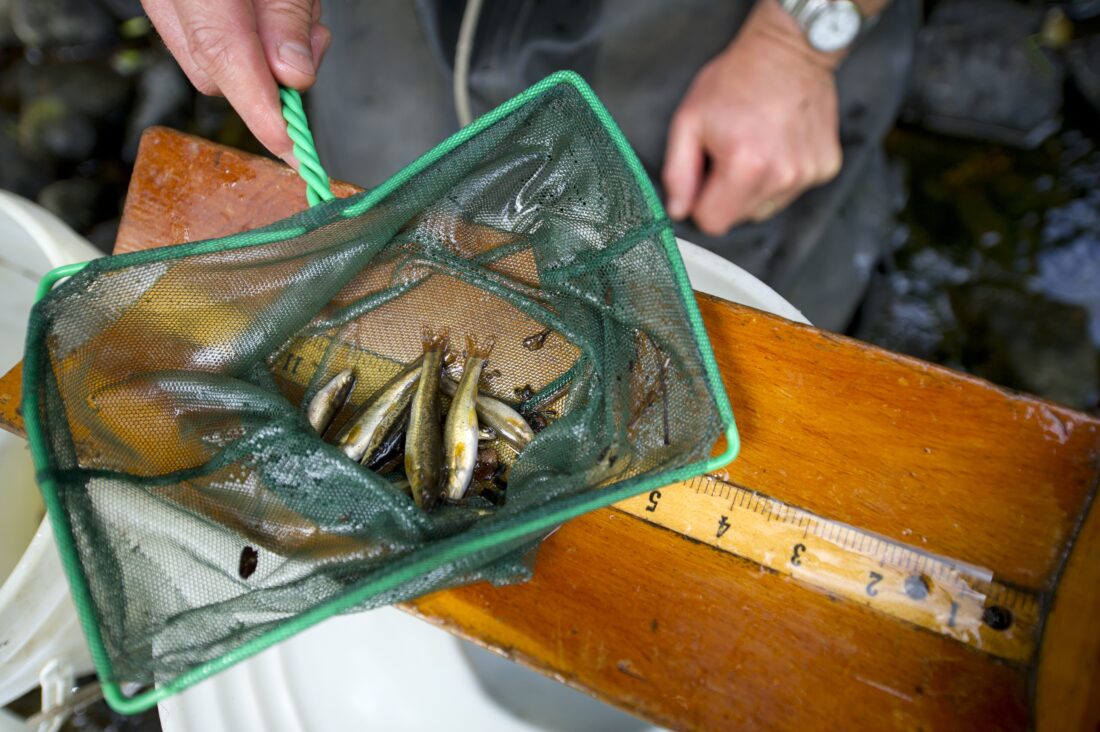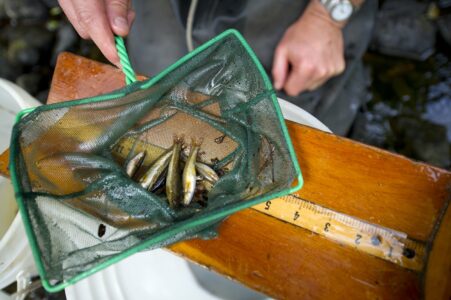Fisheries surveys play key role in DNR’s management options

Michigan Department of Natural Resources crews completed 179 surveys of inland lakes and 110 surveys of streams in 2024. (Michigan Department of Natural Resources photo)
LANSING — Michigan Department of Natural Resources fisheries management units completed more than 280 fisheries surveys across the state in 2024, including 179 surveys of inland lakes and 110 surveys of streams.
Collecting key data on Michigan’s fisheries is critical for successful management of the state’s diverse fisheries, the DNR said. These surveys help track inland fisheries populations, evaluate stocking efforts to increase angler opportunities or address concerns from the public.
“The fisheries management units performed inland fisheries surveys to evaluate if management actions, like fish stocking or habitat improvement projects, had the desired effect,” said Jim Francis, DNR Fisheries Division Lake Erie basin coordinator. “Survey data helps us understand whether our management actions resulted in better recreational fishing in certain areas or improved the overall health of a lake or stream.”
DNR inland fisheries surveys fall into three categories: evaluating management actions, understanding status and trends and finding answers to new questions or concerns.
Fish population abundance is estimated and in-stream habitat data is collected annually at fixed status and trends sites — usually trout in coldwater streams and smallmouth bass in warmer waters — on a three-year rotation. The DNR also performs random site surveys, which are intended to give a species snapshot and show relative abundance.
Discretionary surveys are used to answer questions or address current concerns that may have been raised by a local biologist, angling group or lake association. Such surveys, which usually account for 50% of the department’s annual survey effort, might be conducted to assess habitat suitability for threatened and endangered fish species.
The DNR’s ability to regularly complete the surveys is dependent on sufficient, sustainable, long-term funding.
“Under our current funding level, an inland lake in Michigan is likely to be surveyed only once every 90 years. This affects our ability to deliver on our public trust responsibilities to Michiganders and needs to be addressed,” said DNR Fisheries Division Chief Randy Claramunt.
Increasing the survey frequency on lakes and streams is a goal of the division, but it depends on increased funding.
“DNR fisheries managers use the information resulting from all types of surveys to strategize actions, detect early indicators of invasive species, recognize developing threats to fish and habitat health, and much more,” Francis said.”Anglers rely on information from these surveys when planning fishing trips, and a number of partners depend on survey findings to inform strategic efforts such as habitat protections. Healthy, high-quality aquatic ecosystems and waters benefit everyone.”
For more, go to https://www.michigan.gov/dnr/managing-resources/fisheries.





